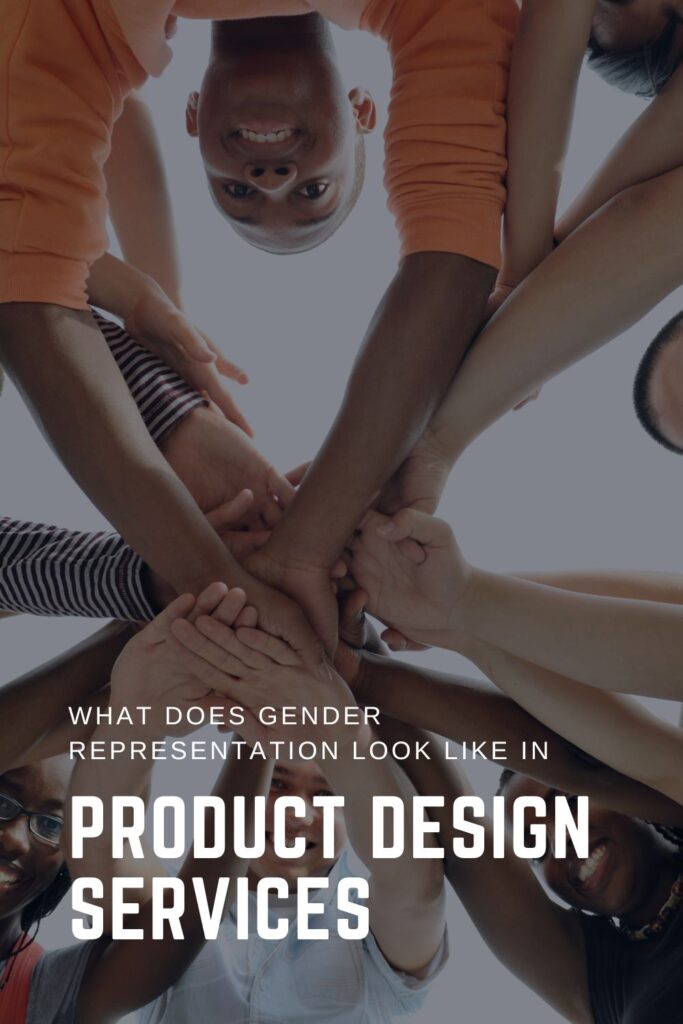Gender representation in product design services is a layered topic that primarily focuses on the following components: the diversification of design teams, the stereotypes about user behaviors and traits, and the methods by which products are marketed and sold to the public. This blog will delve into each of these components, exploring the obstacles and opportunities for gender diversity in the industry.

Diversification of Design Teams
One critical facet of gender representation at a product design and development company is the diversification of design teams. Gender diversity is essential as it empowers companies to be more innovative, bringing in a wide range of viewpoints and voices to be included in the design process, resulting in products that appeal to diverse consumers.
The unfortunate truth of the matter is that women, trans, and non-binary people make up the minority of the design industry, and there are systemic obstacles that limit their ability to access work in the field.
Product design companies can address this significant gap in the following ways:
- promoting diversity in design recruitment and hiring strategies
- developing mentorship programs and networking platforms for minority groups
- tackling gender bias in design education
Stereotypes About User’s Behaviors and Traits
Another facet of gender representation to examine is the stereotypes perpetuated about user behaviors and traits. Designers often have preconceived notions about users solely based on their gender, resulting in unnecessarily gendered products, such as razors, toys, and protein powders.
Products made for women are typically marketed with pink and pastel colors and delicate imagery, while products made for men have bold packaging and stress the importance of power and athletic performance. These stereotypes are baseless, without any backing from empirical research. Furthermore, they perpetuate the marginalization and alienation of people who do not embody traditional gender norms.
Designers can combat gender stereotypes through research, working with diverse user groups to learn about their specific needs and wants. Gender-neutral marketing of products can also help companies stay relevant and embrace inclusivity. Here are some other traits a product designer should have.
Marketing and Selling Products to the Public
Gender representation in product design services also has a significant role in the marketing and selling of products to the general public. Marketing tactics tend to reinforce gender norms, conveying the message that specific products are only designed for men or women.
When you think about the marketing of fitness products, products designed for men usually have packaging that includes images of muscular, masculine models, while products designed for women have packaging with images of thin, feminine models. These marketing tactics create a culture that perpetuates harmful gender binaries and erases women, trans, and nonbinary people’s experiences.
To address this problem, designers and marketers can work together to develop inclusive marketing campaigns that appeal to a diverse audience. For instance, campaigns can feature models of diverse backgrounds and promote gender-neutral messaging.
Conclusion
Gender representation in product design services is complex and involves different factors, including the diversification of design teams, stereotypes about user behaviors, and the marketing of products to the general public. Promoting gender diversity in the workplace, tackling gender biases in the design process, and making inclusive marketing campaigns are all significant steps toward gender equity and societal reform.



